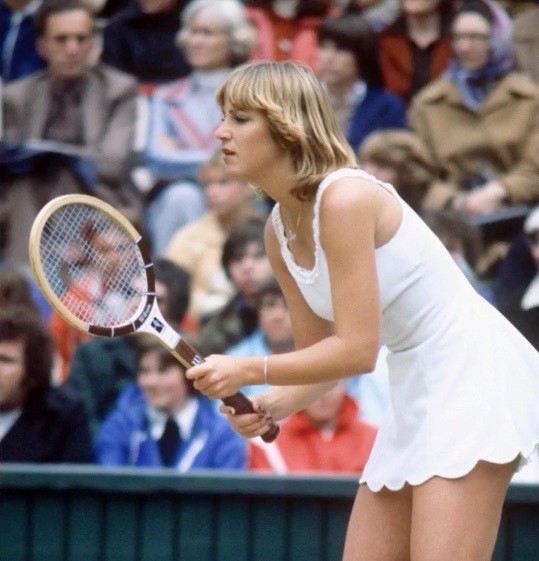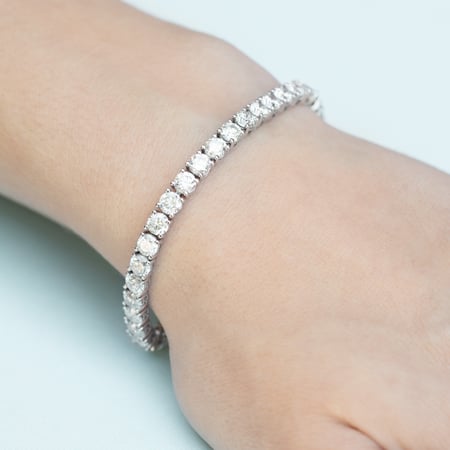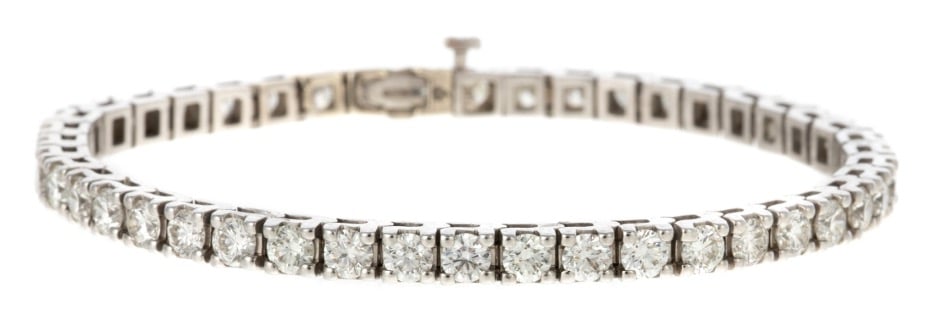The (True) Origin of the Tennis Bracelet
Updated August 17, 2022
With tennis season upon us, we take a look at how the tennis bracelet got its name.
It’s the 1978 U.S. Open. Tennis star Chris Evert and her opponent are engaged in a tense, fast-paced rally. Suddenly, the clasp on Evert’s diamond bracelet breaks and it slips off her wrist. Officials stop the match and allow the athlete to recover her bracelet before resuming play. Recalling the event during a press conference, Evert mentions losing her “tennis bracelet,” and an iconic jewel is born.

Chris Evert in 1978, Photo by Charles Knight/Shutterstock
However, story has gotten mixed up along the way, with various sources reporting that Evert lost her bracelet at the 1987 U.S. Open, and jewelry scholars initially speculating that the name was adopted during the 1970s in response to the star player’s virtually unprecedented pairing of sportswear and diamonds. The novelty of the pairing no doubt played a part in the tennis bracelet’s appeal, as it was one of the first times a professional athlete had donned high jewelry while playing a physically demanding sport. But it wasn’t the whole story.
Today, all of that confusion was put to rest when Evert set the record straight, confirming the 1978 mishap ahead of the launch of her collaboration with jewelry designer Monica Rich Kosann. The Monica Rich Kosann x Chrissie Evert Tennis Bracelet Collection features thirteen classic tennis bracelet styles, each including an emerald in homage to the green tennis courts where Evert made jewelry and sports history.
 Lot 199, Photo credit: Vivian Marie Doering
Lot 199, Photo credit: Vivian Marie Doering
The centerpiece of Evert’s on-court fashion, tennis bracelets—also known as line bracelets or eternity bracelets—traditionally comprise diamonds of similar sizes and cuts set in a flexible line. The classic bracelet style has been fashionable since the Art Deco era, when women’s wrists featured stacks of platinum and old European-cut diamond line bracelets. But its popularity (and sales) reached new heights during the 1970s, thanks in large part to Evert’s televised bracelet malfunction, as well as other “disco era” trends.
No longer reserved for evening gowns and black-tie events, opulent diamonds and heavy gold were part of more casual ensembles: bellbottoms and free-flowing trouser suits; miniskirts and wrap dresses. 1970s contemporaries from prominent jewelry houses—such as Tiffany & Co.’s diamonds-by-the-yard necklaces by Elsa Peretti and Cartier’s Love Bracelet by Aldo Cipullo—used luxurious materials to create simple, easy-to-wear jewels. Light and flexible, the tennis bracelet embodies the chic effortlessness of 1970s fashion.
The tennis bracelet remains a jewelry collection staple today, and its popularity is likely to surge with Evert and Kosann’s new collection. Our July 21 auction featured several shiny tennis bracelets, as well as a couple of their 1920s predecessors.

Lot 122: A 5.00 ctw Diamond Tennis Bracelet in 14K
Lot 122 is a true classic, boasting 5.00 carats of sparkly round brilliant-cut diamonds in 14-karat white gold.
 Lot 199: A 12.90 ctw Diamond Tennis Bracelet in Platinum
Lot 199: A 12.90 ctw Diamond Tennis Bracelet in Platinum
For even more bling, see Lot 199: an impressive 12.90-carat diamond tennis bracelet in platinum.

Lot 115: An Art Deco 5.00 ctw Diamond Bracelet in Platinum
The stylized links on Lot 115 put a unique spin on the Art Deco line bracelet. Dating to around 1925, the bracelet features 5.00 carats of old European-cut diamonds set in platinum.

Lot 217: An Art Deco 3.50 ctw Diamond Line Bracelet
Lot 217 is another Art Deco dazzler comprising square platinum links set with 3.50 carats of old European-cut diamonds.
With the true origin story now confirmed, we can look forward to Chris Evert’s fresh take on the bracelet she’s already made a classic.

Erin Riggins-Hartlaub
Specialist, Fine Jewelry, GIA GD & AJP
erin@alexcooper.com